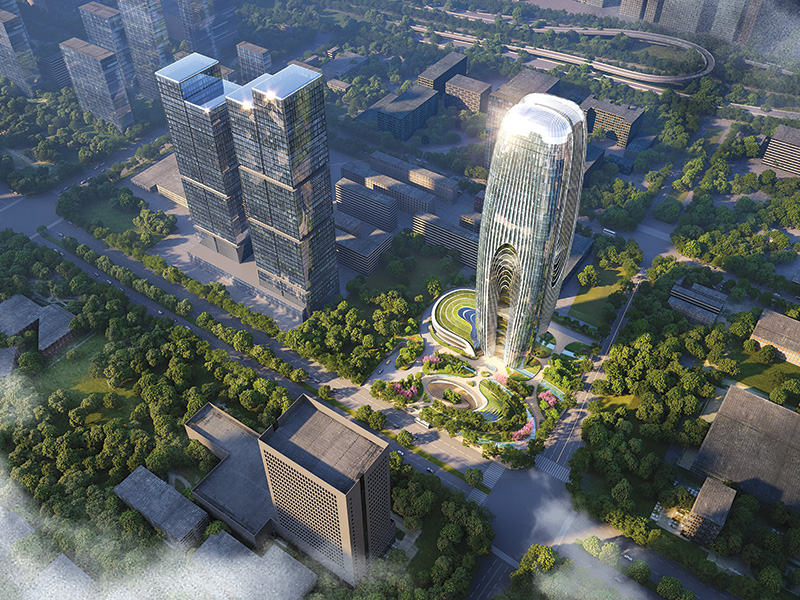Fact File
Project Name: New River Train Observation Tower
Location: Radford, Virginia
Project Completion Date: 2021
Client: City of Radford, Virginia
Budget: 101,000 USD
Project Architects: Edward Becker, Kay Edge
Design team: Kirt Hilker, Robert Riggs, and Virginia Tech students
Primary Material: Hardwood cross-laminated timber
Photo credit: Kay Edge and Edward Becker
Source: V2com
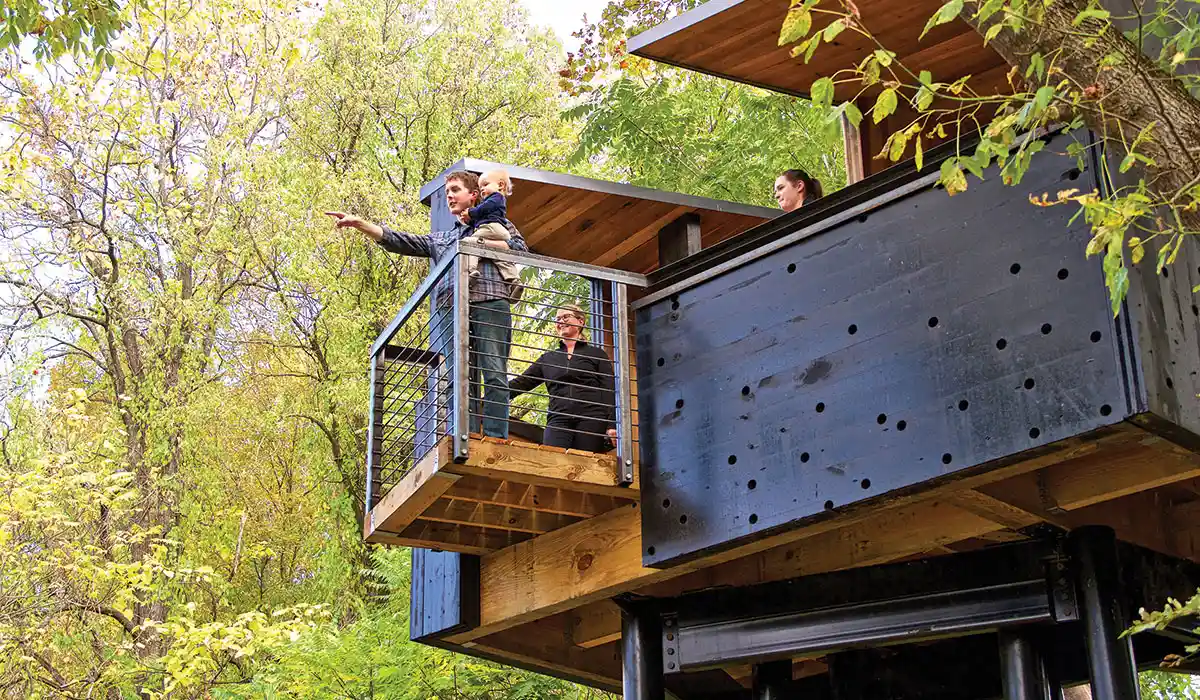
In 2018, the riverfront city of Radford, Virginia, approached Virginia Tech – a public research university – to assist the town with the visioning for a new observation tower that would provide views over the adjacent New River and a historically significant railroad bridge. A primary objective was the use of clean-tech, low-carbon building products as a way to showcase the city’s transition from its industrial past.
Over the following two-year project period, an interdisciplinary faculty and student team partnered to research, design, and build the 75-ft long x 30-ft high public building. Early in the design process, the students chose to focus on emerging building technology - Cross-Laminated Timber (CLT) - due to its strength, sustainability, and unique spatial properties. As the design process progressed, the project team discovered that the carbon cost to ship industrially produced cross-laminated timber panels to the project site was too high and were forced to “think local” to cut carbon costs, thus entailing the creative application of locally-sourced raw materials.
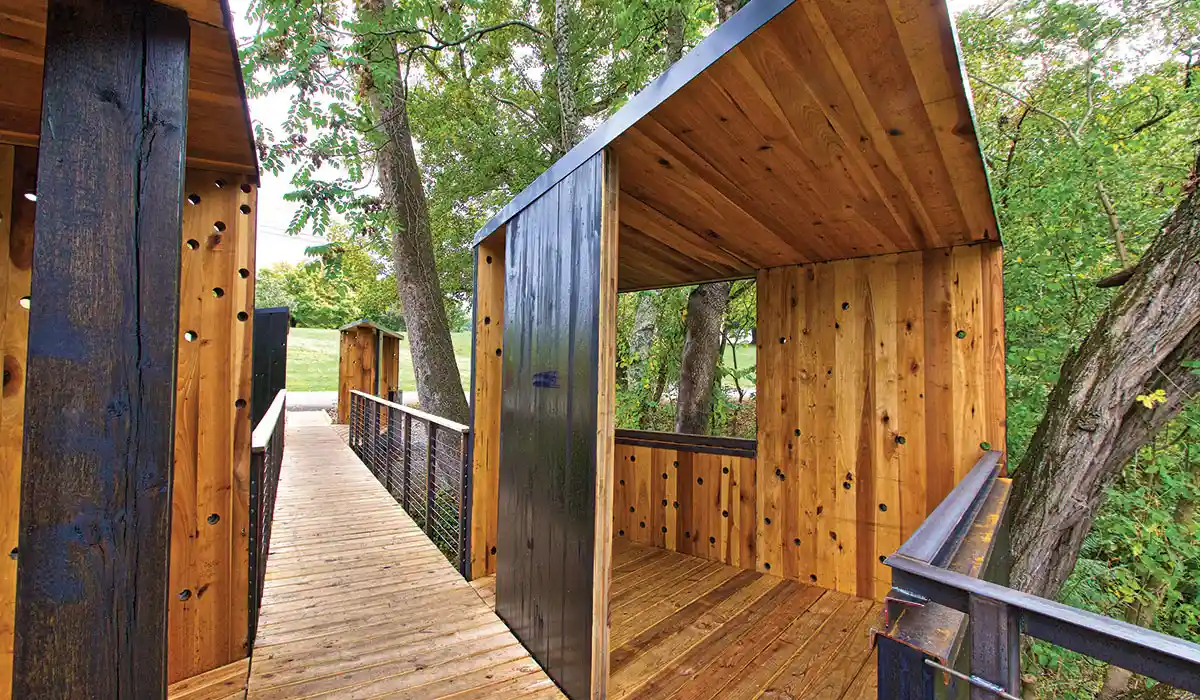
Low-carbon product development
The custom-developed, hardwood cross-laminated timber (HCLT) utilizes low-grade Yellow Poplar lumber regionally sourced from oversupplied, hardwood-dominant forests. HCLT not only outperformed all other commercially available CLT in the U.S. market – notably made from softwoods – but its raw materials were also sourced and up-cycled within a 200-mile radius of the project site.
The team incorporated unique architectural features into the project that aligned with HCLT’s robust performance metrics, namely 3-inch thick structural cantilevers, and exterior exposed structural members. In the United States, the production of CLT is governed by APA/PRG-320 code requirements, which only permit construction with certified softwood panels. As such, the project team pursued a performance-based approval process for the custom product through the collection of data relating to its structural and moisture-related performance, and its susceptibility to UV, fungal, and insect degradation, a key part of the interdisciplinary project process.
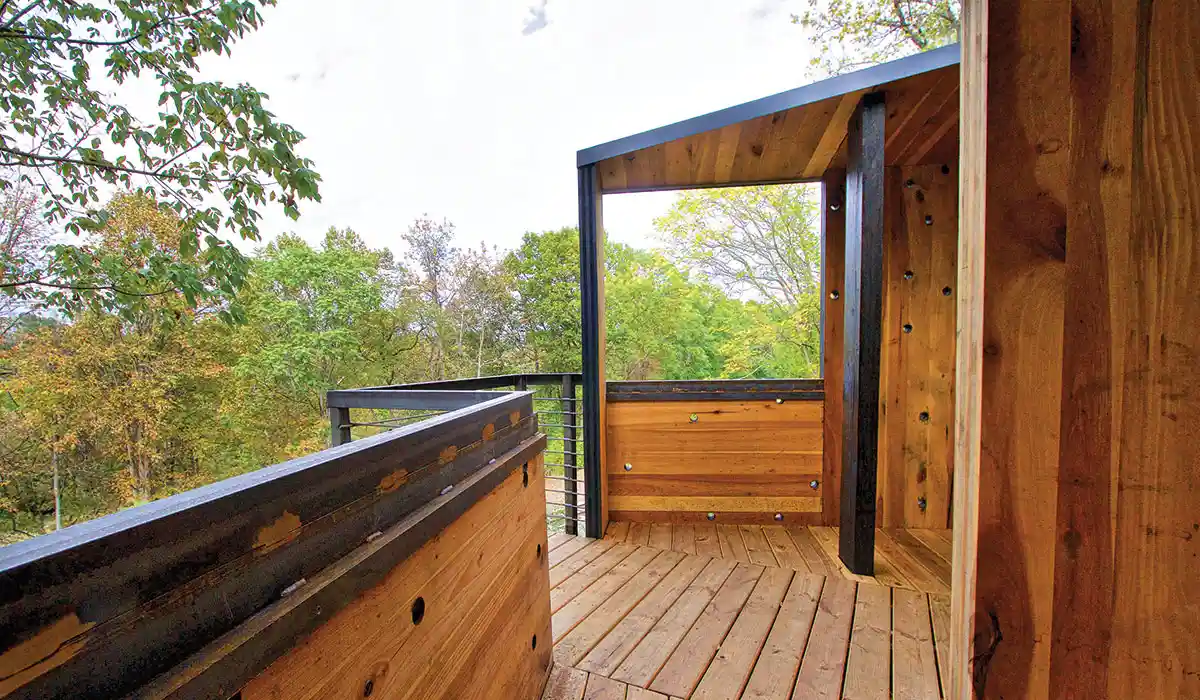
Modular construction
Perched above the New River on a steeply sloping brownfield site, the challenging site conditions required the project team to prefabricate building components in a controlled environment offsite. The project’s architectural design involves two modular HCLT cubes that are bisected by a public walkway. The walkway begins at grade and culminates in a 20-ft high cantilever as the site drops steeply towards the river.
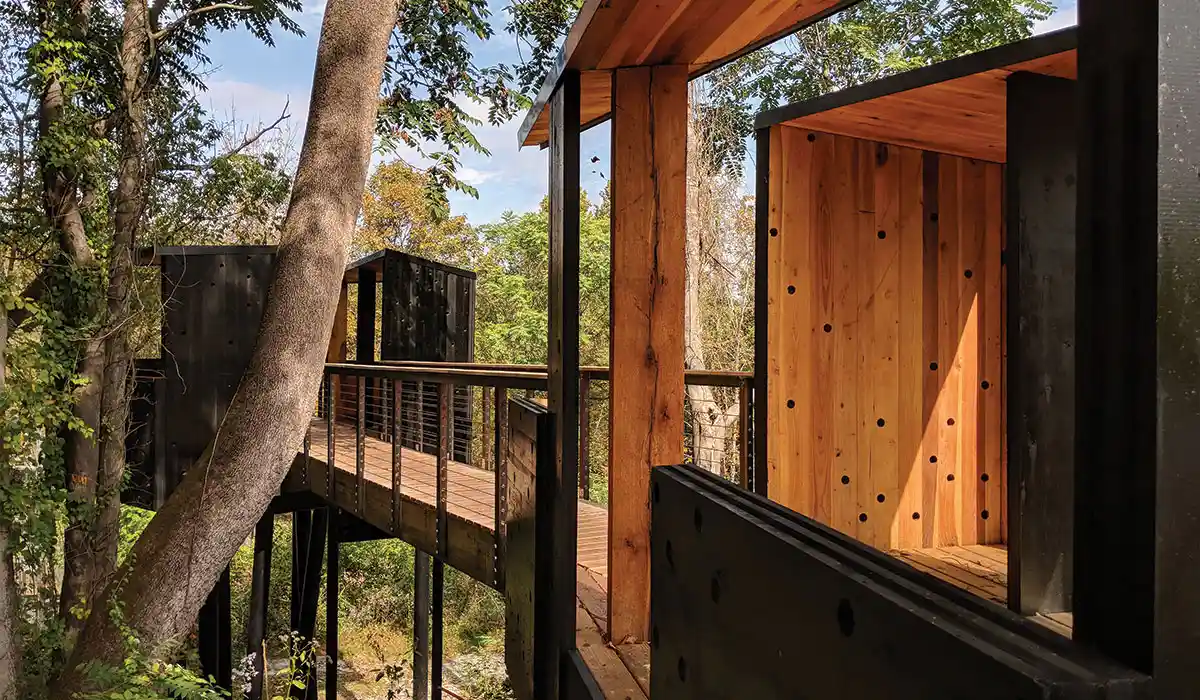
Due to complicated site logistics, including the ruins of a Civil-war era building discovered under the project’s foundations during construction, the project team entirely prefabricated a 10-ft x 15-ft HCLT module that was then subsequently craned into place on-site, with a 6-inch tolerance from surrounding trees.
The New River Train Observation Tower is the first project globally to utilize modular HCLT construction methods in a permanent building, thus entailing unique and careful detailing to keep the cantilevering, panelized system water protected and safe from racking during construction. The project is also globally unique as an example of exterior-exposed structural elements made from laminated hardwood. Each screw hole was impregnated with liquid wax, and then the entire exterior envelope was coated in a linseed oil and natural pine tar mix to protect it from UV, heat, and moisture damage.
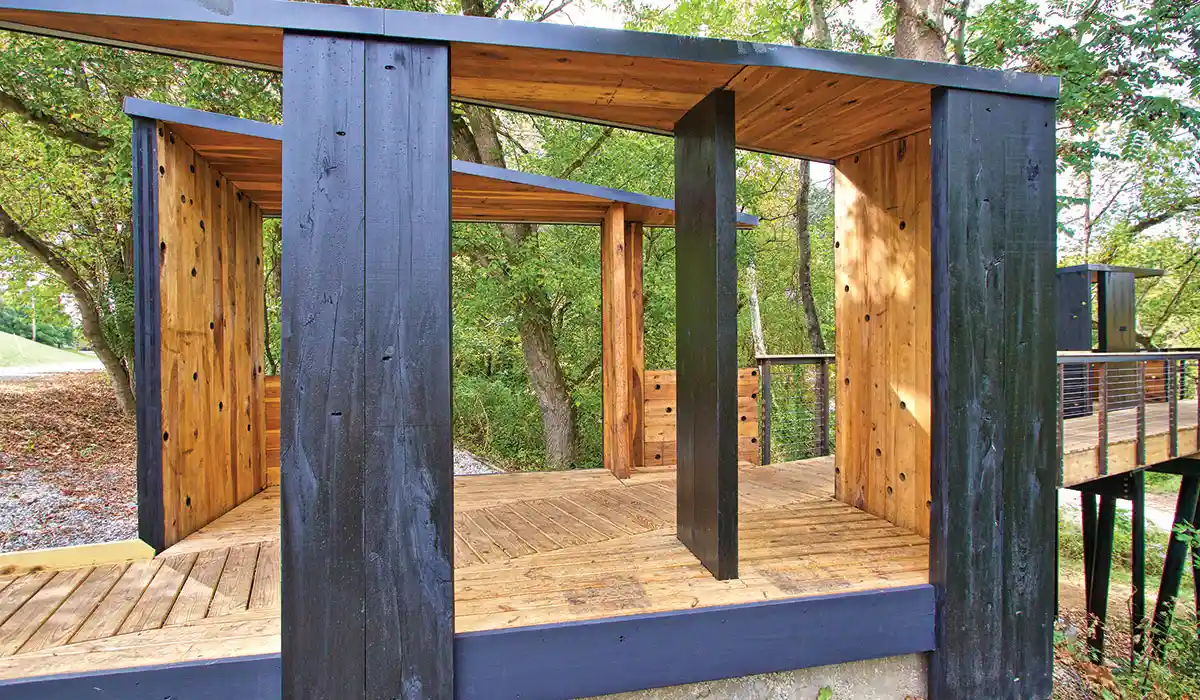
The project is the first permanent, HCLT building permitted in the United States. It sets a benchmark for low-carbon, research-based, sustainable construction, and upcycling of low-value locally sourced materials.








